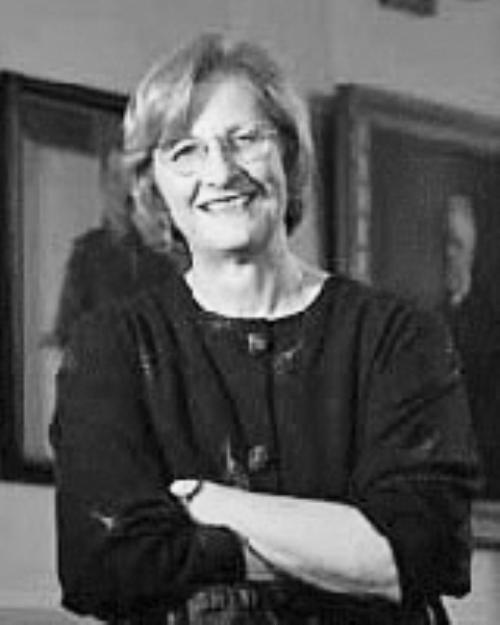
News
‘Deal with the Devil’: Harvard Medical School Faculty Grapple with Increased Industry Research Funding

News
As Dean Long’s Departure Looms, Harvard President Garber To Appoint Interim HGSE Dean

News
Harvard Students Rally in Solidarity with Pro-Palestine MIT Encampment Amid National Campus Turmoil

News
Attorneys Present Closing Arguments in Wrongful Death Trial Against CAMHS Employee

News
Harvard President Garber Declines To Rule Out Police Response To Campus Protests
Galison, Ulrich Nab New Titles

Harvard honored two scholars of history last week, bestowing the prestigious title of University professor upon Laurel Thatcher Ulrich and Peter L. Galison ’77.
Ulrich and Galison join a community of 17 other current University professors, whose work transcends academic disciplines. Since the title was created in 1935, the scholars who hold it report directly to Harvard’s president instead of a school dean.
IN OLD NEW ENGLAND
Ulrich, until recently the Phillips professor of early American history, received the Pulitzer Prize in 1991 for her book, “A Midwife’s Tale,” based on a diary kept by a Maine woman from 1785 to 1812. That book inspired a 1996 PBS docudrama, in which Ulrich herself appeared.
Ulrich, who majored in English at the University of Utah, said her move from the Rocky Mountains to New England piqued her interest in this region’s history. She said the full title of her new chair, the 300th Anniversary University professorship, fits her well because her work examines the way in which 20th century New Englanders have viewed their own past. Harvard turned 300 in 1936.
This spring Ulrich will teach the Core course Historical Study B-41, “Inventing New England: History, Memory, and the Creation of a Regional Identity,” and she said in an interview that “the early 20th century was very much about looking back to the colonial times.”
Her own journey into colonial and post-Revolutionary American history was dictated in part by the life of her research subject, midwife Martha Ballard.
SPINNING A TALE
Ulrich “didn’t intend to do medical history” at first, but since her subject worked with sick patients and pregnant women, Ulrich said she “couldn’t very well interpret [Ballard’s] work without getting pretty interested in folk medicine, herbs, and the kinds of things she was involved in.”
Ballard’s accounts also led Ulrich into subsequent study of women’s needlework and early American material culture.
“It was really ‘A Midwife’s Tale’ that led me into this work with textiles, because there’s so much spinning and weaving in that diary,” Ulrich said. “I was trying to figure out what that meant and where it was coming from, so I got into economic- and artifact-based history.”
As she examined Ballard’s integral role in a post-Revolutionary Maine community, Ulrich has established herself as an influential figure in academia.
“She has a genius for teasing meaning out of the sources, which is the heart of what we do,” History Department Chair Andrew D. Gordon wrote in an e-mail.
FROM PARIS WITH LOVE
Perhaps it’s fitting that Peter L. Galison, who was until recently the Mallinckrodt professor of the history of science and of physics, could only be reached via e-mail over intersession from a locale that was once home to historically-significant physicists such as Henri Becquerel and Marie Curie: Paris.
From a room looking out onto the Eiffel Tower, Galison wrote that he is drinking “about 10 times more coffee than is good for me” while working as a visiting professor at L’Ecole Normale Supeieure and L’Ecole des Mines.
“The center of my interest is physics and its profound involvement with the philosophy, art, wars, and politics of the last hundred years,” he wrote. “Since I was an undergraduate I’ve wanted to think about the ideas of physics and how they meshed and clashed with ideas from the humanities.”
As Pellegrino University professor, Galison joins a line of storied scholars who have held the same post, including philosopher Robert Nozick and biologist Edward O. Wilson.
“The University professorship is a tremendous honor for which I am very grateful,” Galison wrote. But, he added, “it is also somewhat intimidating.”
“If it helps me learn more about what my colleagues in other departments are working on and how they think about their work, as I’m sure it will, then it will be a great pleasure for many years to come,” he wrote.
A look at Galison’s teaching partners revealed that he has made headway in bridging art and science.
He has collaborated with Arnheim Lecturer on Filmmaking Robb Moss for a course about capturing scientific practice on film. And he has joined with Professor of the History of Architecture and Technology Antoine Picon for a seminar on architecture and science.
Galison has also connected science with other areas of the humanities. He has led a course on scientific realism with philosopher Hilary Putnam, who is the Cogan University professor of philosophy emeritus. And he joined with Smith Professor of Law Martha Minow for a course titled “Technoprivacy.” That duo also plans to co-teach a class on scientific doubt in law and science when Galison returns in the fall.
Even as he branches into other departments, Galison continues to win praise from his own.
The chair of the History of Science Department, Allan M. Brandt, said that “Peter is just a remarkably creative scholar whose work spans science, culture, and politics.”
“He’s had a powerful interest in art and film, so he’s really the kind of creative and innovative scholar that the University professorship is designed to recognize,” Brandt, who has worked with Galison for 15 years, said in an interview.
—Staff writer Lulu Zhou can be reached at luluzhou@fas.harvard.edu.
Want to keep up with breaking news? Subscribe to our email newsletter.
